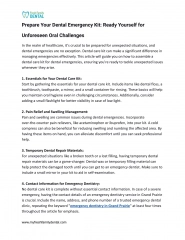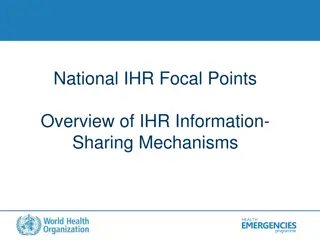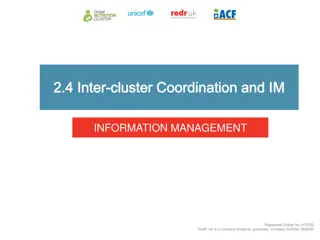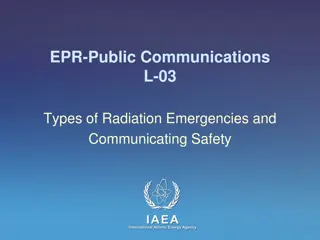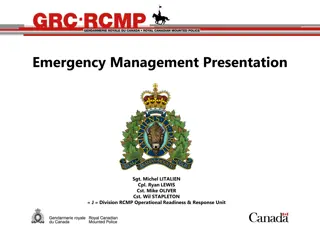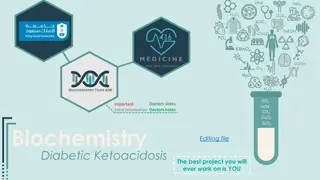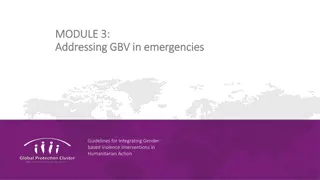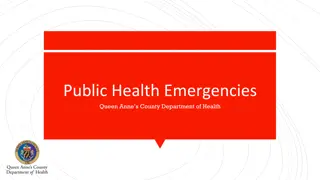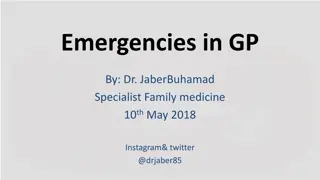
Respiratory Adverse Events in Sedation: Causes and Signs Revealed by Paula J. Colescott, MD
Discover the chief cause and signs of respiratory adverse events during sedation as explained by Paula J. Colescott, MD, a Diplomat of the American Board of Addiction Medicine. Learn how to predict and manage airway obstructions in sedated individuals at risk, emphasizing the importance of recognizing symptoms of obstructive sleep apnea.
Download Presentation

Please find below an Image/Link to download the presentation.
The content on the website is provided AS IS for your information and personal use only. It may not be sold, licensed, or shared on other websites without obtaining consent from the author. If you encounter any issues during the download, it is possible that the publisher has removed the file from their server.
You are allowed to download the files provided on this website for personal or commercial use, subject to the condition that they are used lawfully. All files are the property of their respective owners.
The content on the website is provided AS IS for your information and personal use only. It may not be sold, licensed, or shared on other websites without obtaining consent from the author.
E N D
Presentation Transcript
COMMON EMERGENCIES IN DETOX Paula J. Colescott MD Diplomat of the American Board of Addiction Medicine paula.colescott@providence.org
What is the chief cause of respiratory adverse events occurring during sedation? Airway obstruction
What are the signs of Airway Obstruction? Snoring Movement of the upper abdomen (diaphragmatic contraction) without visible signs of the chest rising and falling as one would expect with air entering the lungs Decreased breath sounds Stridor loud high pitched sounds with inspiration. Choking
Can you predict if someone is at risk for airway obstruction if sedated? YES Ask if they snore Have disturbed sleep accompanied by excessive daytime somnolence These are hallmark symptoms of obstructive sleep apnea
The Airway Prone to Obstruction
Airways with difficult mask-ventilation and tracheal intubation
Oropharyngeal examination in a 35-year-old man reveals Mallampati grade I presentation of the palate's velum
Mallampati III presentation in a 24-year-old woman. Notice how the palatal arches cannot be visualized.
The goal in detox is to achieve a state of Minimal sedation/anxiolysis to Moderate sedation. The patient should be easily arousable, with ability to maintain his/her airway, with no drop in blood pressure. BZDs are Sedatives will relax muscles in a person with OSA decreased tone of the pharyngeal muscles, pharynx collapses even with small inspiration
Monitoring ventilatory function by observation or auscultation reduces the risk of adverse events associated with sedation
Hypoxemia : O2Sat 95% or less . O2Sat : 90% or less significant hypoxia requires immediate action
Regular monitoring of vital signs in practice also decreases the risk of adverse outcomes during moderate and deep sedation
Know where your emergency equipment is Bag and mask Suction
Which of the following is a main determinant of the drive to breathe in humans? Partial pressure of CO2in arterial blood (PaCO2) Partial pressure of O2in arterial blood
Sedatives / Opioids blunt response to CO2
An obese 60 year old alcoholic who smokes is difficult to arouse 2 hours after 50 mg of Librium Stimulation Opening the airway by repositioning the head Supplemental oxygen Bag / Mask ventilation Administration of reversal agents
Moving the tongue forward
a CPAP device increases air pressure to keep airways open so you can rest more soundly without the breathing pauses that interrupt sleep.
Do you know where the AED is? Do you know where the O2 sat monitor is? Do you know where the ambu bag is in case of a cardiac arrest? Do you know the # for the paramedics? Do you know how to do CPR? BE READY
46 year old male, alcohol dependent, day 2 withdrawal, not drinking because he is nauseated. + diarrhea. He tells you he is dizzy and weak, feels terribly anxious. WHAT SHOULD YOU BE THINKING ??
DEHYDRATIION = VOLUME DEPLETION a. Dry tongue b. Blood pressure drops by 12-15 pt. from supine to standing c. Pulse goes up by 15 beats/minute from supine to standing d. Decreased urination. e. The urine is dark (concentrated), strong smelling, and the specific gravity of the urine is > 1.020. May be + for ketones.
WHAT IS THE TREATMENT FOR DEHYDRATION? 1STTreat the nausea with zofran/phenergan 2ndGive immodium to stop the volume loss from diarrhea 3ndAttempt to hydrate orally 4rdMonitor I & O s 5thcheck the specific gravity when the client urinates. With adequate hydration the specific gravity will decrease (1.030 1.010 ) 6thif client can t comply, send to ER for hydration 7thThese efforts should be in your notes!
Call for helpCode blue get crash cart Ease to the floor Protect head Maintain Airway/suction/Vitals/O2 sat/ time the seizure Glucose finger stick, <50 give glucagon Recovery position/support airway Call Provider/EMS to ER May give 1 mg Ativan per order Complete Seizure form for ER Seizures
Do you know where the AED is? Do you know where the O2 sat monitor is? Do you know where the ambu bag is in case of a cardiac arrest? Do you know the # for the paramedics? Do you know how to do CPR? BE READY

